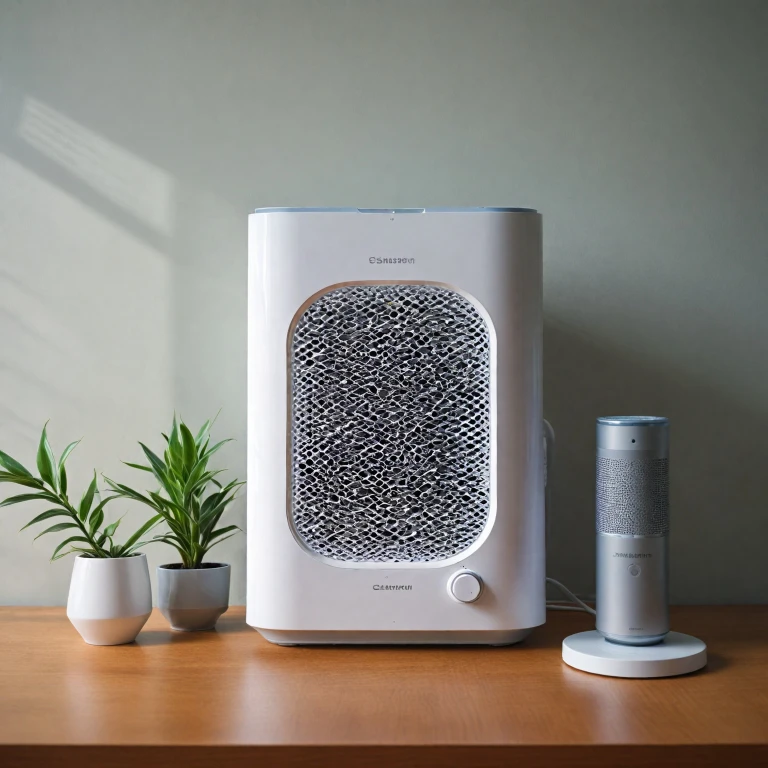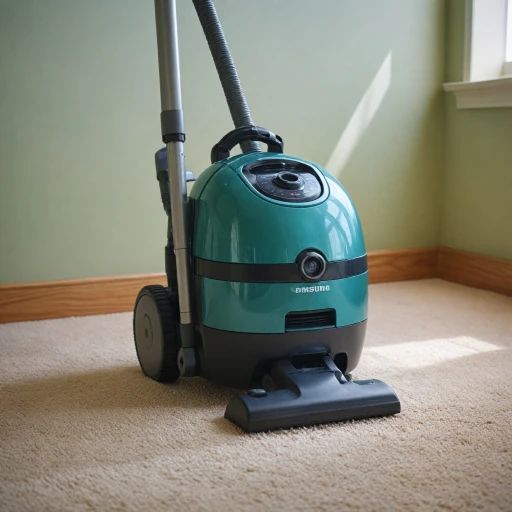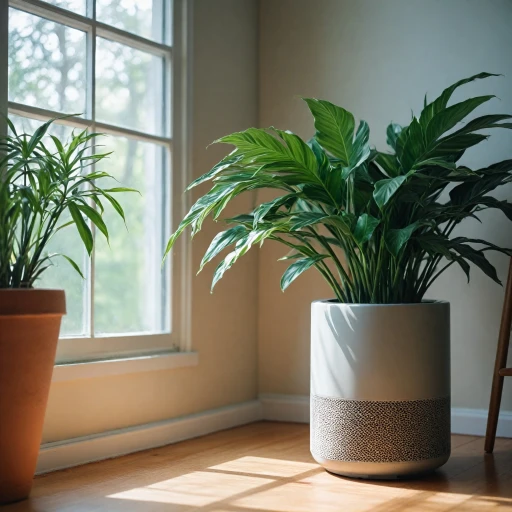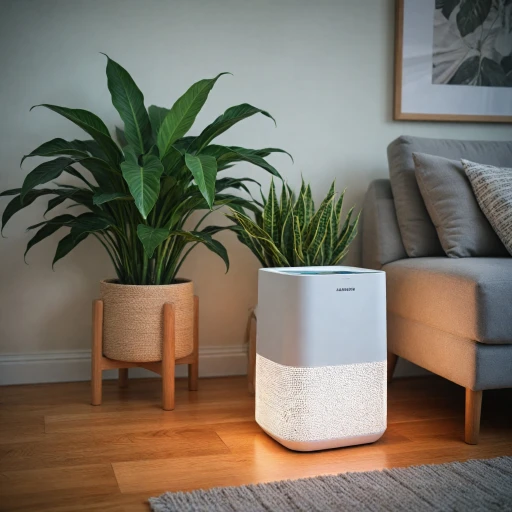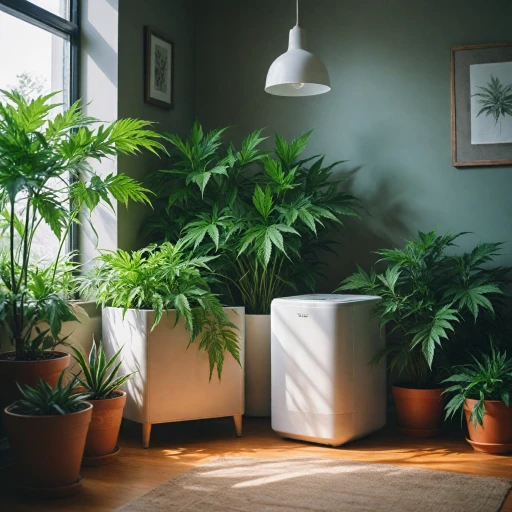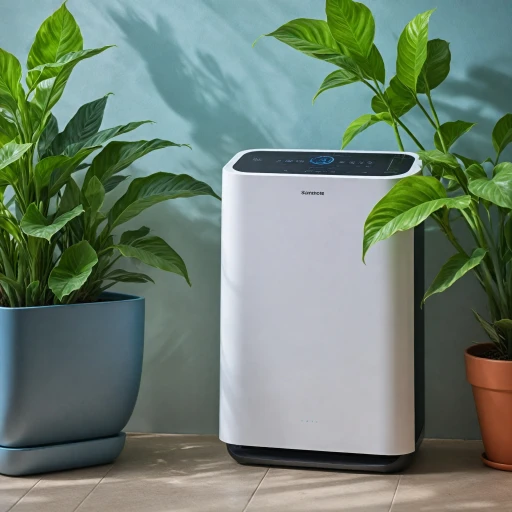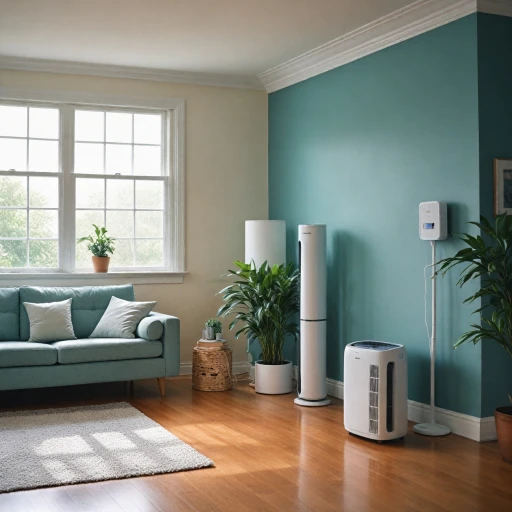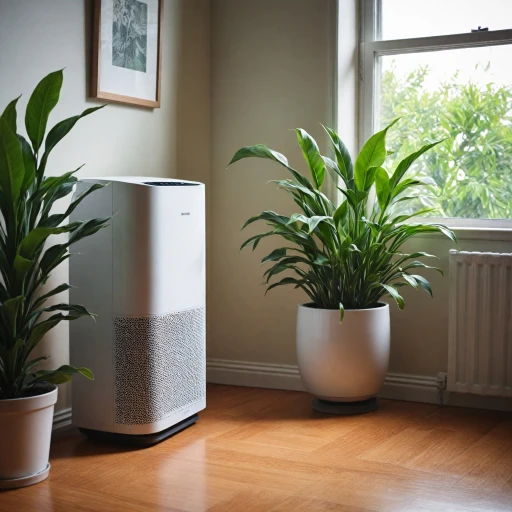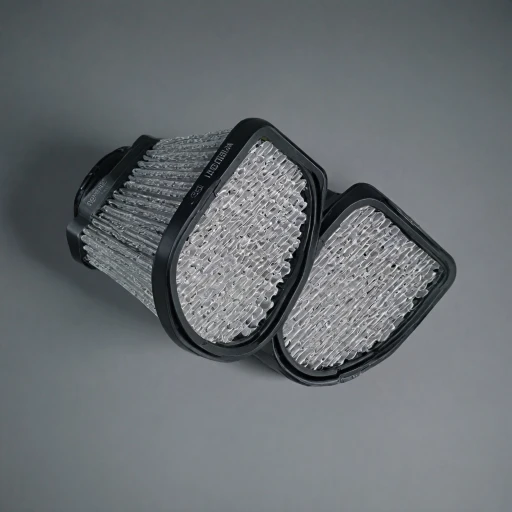
What is an Air Amplifier?
Unveiling the core of air amplification technology
The concept of an air amplifier might sound unfamiliar to some, yet these devices have a critical role in the world of air purification. Essentially, an air amplifier is designed to increase the volume of airflow, leveraging the power of compressed air. By drawing in ambient air, these amplifiers efficiently multiply the initial input, resulting in high flow rates that are beneficial for various applications.
These strategic devices play a significant role in improving the performance of air purifiers by enhancing the movement of air through filters, making them more effective in capturing contaminants. Unlike traditional fans, which rely solely on blades to move air, air amplifiers use advanced mechanisms minimizing moving parts, reducing wear and tear over time.
The common materials used in manufacturing air amplifiers include stainless steel and aluminum. These materials are chosen for their durability and capacity to withstand high temperatures and pressures, ensuring long-lasting functionality. Mounting options are versatile, with NPT and BSP threading available to suit various setup configurations.
When examining the detailed specifications of these amplifiers, one might come across terms like 'super air', 'SCFM', and 'SLPM', which refer to the flow rates of the air, an indicator of efficiency and capability. Quality products, such as those offered by EXAIR, are designed with adjustable nozzles that allow for precise control over the airflow, tailoring to specific needs whether in cooling, drying, or enhancing air quality in home and office environments.
For more information on innovative products in the realm of air purifiers, consider exploring Skyrocket your air purifier knowledge where you can discover top-notch air purification solutions.
How Air Amplifiers Enhance Air Purifiers
Enhancing Air Purification Efficiency with Amplifiers
Air amplifiers play a pivotal role in boosting the efficiency of air purifiers by optimizing air flow. These devices use the principles of air amplification to increase the volume of air circulated in a space without the need for moving parts. Not only do they enhance the overall performance of air purifiers, but they also provide a quieter option compared to traditional fans. Their ability to cool and circulate air rapidly makes them a vital component of an effective air purification system. The super air amplifiers generate a powerful flow of air using compressed air. This process is facilitated by high-efficiency nozzles that create an amplified air flow using minimal energy. The flow amplifier, often crafted from aluminum or stainless steel, can be utilized in both home and office settings, thanks to its adjustable and versatile design. When integrated into air purifiers, flow amplifiers offer a unique advantage with their ability to deliver an air flow that surpasses that of traditional fan systems. Their constructions, often of stainless steel or aluminum, ensure that they are robust and durable. The incorporation of parts compatible with both NPT and BSP standards, such as the amplifier npt, further enhances their compatibility and ease of installation in a variety of systems. Moreover, the maintenance of these amplifiers is straightforward, usually requiring routine checks to ensure optimal performance. The absence of moving parts reduces the wear and tear significantly, contributing to lower maintenance costs over time. By opting for air amplifiers in air purifiers, you are not only enhancing your unit's efficiency but also contributing to a healthier environment indoors. For more comprehensive insights into how to elevate indoor air quality alongside such powerful air purification tools, you can explore more about enhancing indoor air quality with HEPA-equipped air conditioners. This deeper understanding will equip you to make informed decisions that bolster your health and comfort.Comparing Air Amplifiers with Traditional Fans
Distinguishing Air Amplifiers from Traditional Fans
When it comes to enhancing the efficiency of air purifiers, air amplifiers offer distinctive advantages over traditional fans. At the core of this comparison lies how each system optimizes and utilizes airflow. Air amplifiers employ a mechanism that leverages compressed air to produce a significant increase in air flow without relying heavily on moving parts. These devices typically consist of materials like stainless steel or aluminum, known for their durability and ease of maintenance. The result is a product air flow capability that is both efficient and adaptable to various settings. Traditional fans, in contrast, rely on rotating blades to move air. While effective up to a point, this method lacks the flow amplification that air amplifiers provide. Traditional fans can also generate more noise and consume more energy, which might not be ideal for every environment needing high air flow an air amplifier provides. Moreover, air amplifiers, such as those offered by specialized brands like Exair, have adjustable nozzles and are often equipped with NPT or BSP threading options for easy installation. This feature ensures tailored air flow direction and power, unlike most traditional fans, which have a fixed flow direction. For applications requiring super air performance, such as cooling high-performance equipment or maintaining cleaner air in a home setting, air amplifiers are an excellent choice. This unique capability makes them a valuable addition in both residential and commercial spaces. Should you wish to delve deeper into the specific needs of an indoor environment, like a nursery, consider exploring how choosing the right air purifier for your baby's nursery can make a difference in air quality and safety. In conclusion, while traditional fans have their place, the modern air amplifier stands out as a cutting-edge solution for those seeking optimized airflow and energy efficiency.Key Features to Look for in Air Amplifiers
Identifying Crucial Attributes in Air Amplifiers
When selecting air amplifiers for air purifiers, there are key features you should inspect to ensure optimal performance and longevity. These features not only affect the efficiency of air purifiers but also contribute to their versatility and effectiveness in varying environments.
- Material Choice: Air amplifiers are commonly made from stainless steel or aluminum. Stainless steel options are robust and resistant to corrosive environments. However, aluminum is lightweight and often more cost-effective.
- Flow Rate: Look for air amplifiers that provide the appropriate SCFM (Standard Cubic Feet per Minute) and SLPM (Standard Liters per Minute) to meet your air purifying needs. A higher flow rate can enhance cleaning capabilities.
- Adjustability: Ensure the air amplifier offers adjustable nozzles for versatile air flow control. Adjustable features make them suitable for diverse applications, whether you need soft-flow or high-flow air streams.
- Connections: Verify compatibility with NPT (National Pipe Tapered) or BSP (British Standard Pipe) threading to ensure seamless installation in existing systems.
- Durability and Maintenance: Consider models with minimal or no moving parts. These designs reduce the need for frequent maintenance and prolong product life.
The inclusion of a super air knife can also be beneficial in applications requiring smooth and consistent air flow across a surface, offering effective air amplification and cooling solutions. High-quality compressed air options, exemplified by exair super amplifiers, offer efficient energy use and reliable performance.
Incorporating these features ensures that you are investing in a robust, versatile product that can handle current demands and adapt to future needs. As with any technological investment, evaluating these criteria against price and performance will determine the best fit for both home and office environments.
Benefits of Using Air Amplifiers in Home and Office
Advantages of Incorporating Air Amplifiers
Integrating air amplifiers into your home or office environment presents numerous benefits, thanks to their innovative design and efficient air flow management. Unlike traditional fans, which might struggle with noise or energy consumption, air amplifiers offer a sleek and robust alternative. Below are some of the key advantages:- Enhanced Air Flow: Air amplifiers boost air flow significantly, using a small amount of compressed air to move large volumes – often showcasing flow rates in a range of SCFM (Standard Cubic Feet per Minute). This amplification works wonders in effectively circulating air throughout a space.
- Energy Efficiency: With no moving parts, these devices are incredibly energy-efficient. Conventional fans sometimes require more maintenance, while air amplifiers can save on energy and operating costs.
- Durability and Versatility: The robust construction of stainless steel or aluminum stainless materials ensures longevity. Whether in industrial set-ups or home use, their durability makes air amplifiers a favored choice.
- Adjustable Design: Several products, like the Exair Super Air Amplifier, offer adjustable flow options, providing flexibility to manage air flow per specific needs, ensuring cooling effectiveness and accommodating different sizes of areas.
- Quiet Operation: Compared to their traditional counterparts, air amplifiers maintain a quieter operation. This makes them ideal for environments where noise reduction is essential.
- Cost-Effective: Despite potentially higher initial prices due to high-quality materials like stainless steel, the long-term benefits, including reduced maintenance and extended service life, justify the investment.
Maintenance and Care for Air Amplifiers
Maintaining and Caring for Your Air Amplifiers
Taking proper care of your air amplifiers ensures optimal performance and longevity of your air purification system. Regular upkeep and understanding the specific needs of the components such as the stainless steel or aluminum parts can make a significant difference.- Inspect Regularly: Regular inspections are crucial. Check for any possible wear and tear on components like the stainless steel body and aluminum parts. Pay attention to the nozzles and ensure they are free from obstructions.
- Cleaning the System: Depending on the model, air amplifiers, like the Exair Super Air models or others with flow amplifiers, may require cleaning to prevent airflow disruption. Use a non-abrasive cleaner and warm water to wipe down the surface, ensuring there is no accumulation of dust or particulate matter.
- Compressed Air Maintenance: Ensure that the compressed air supply is clean and dry. High moisture levels can lead to rusting or other issues in the stainless steel components.
- Check Pressure and Flow Rates: Regularly verify the flow rates such as SCFM or SLPM in the system. Adjust the pressure settings if necessary to maintain efficient air amplification.
- Use Appropriate Accessories: Investing in the right accessories and parts like adjustable air nozzles can enhance performance. Consider using cold air or ion air attachments when needed for additional cooling or purification.
- Consult Manufacturer Guidelines: Always refer to the manufacturer’s manual, paying close attention to care instructions specific for different materials like steel air or aluminum stainless components.
